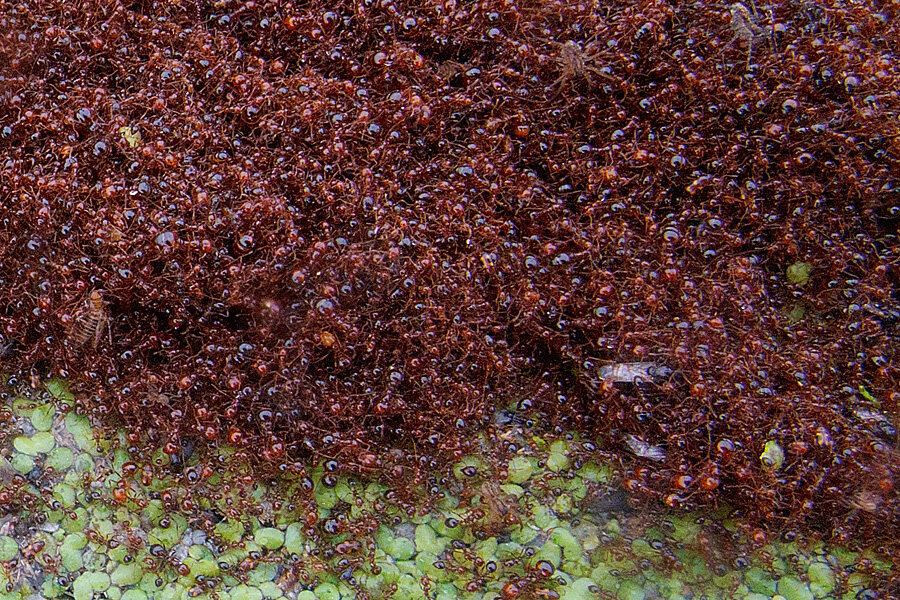To survive S. Carolina floods, ants build rafts from their own bodies
Loading...
The mammoth floods in South Carolina have claimed the lives of fourteen people and left at least nine dams breached. But the water doesn’t seem to be much of a problem for ants, who are building body rafts to stay afloat.
While reporting on the flood conditions, FOX Carolina reporter Adrian Acosta noticed that what he thought was a pile of mud, was actually moving. Upon closer inspection he realized the mass wasn’t dirt, but an ant island.
Ants collective behavior is put to good use during floods, as the tiny creatures “link legs and mouths together, weaving a raft in a process that can take less than two minutes,” says National Geographic.
This behavior is consistent with research done by scientists at Georgia Tech and the University of Lausanne, Switzerland.
According to scientists at Georgia Tech, the ants weave so tightly that water cannot penetrate, allowing the ants to stay afloat for weeks at a time.
“The worker ants and brood were extremely resistant to submersion,” say University of Lausanne researchers in a study released last February. Upon further experimentation, they found that "larvae and pupae (with and without cocoons) were significantly more buoyant than workers."
The brood, or ant babies, “serve as a better flotation device” due to their higher buoyancy and therefore form the bottom of the raft, reported the Christian Science Monitor.
Ultimately, the ants rafting mechanism is a survival tactic meant to protect the queen.
"The workers protected the most vulnerable and valuable nest mate, the queen, by placing her in the center of the raft, and the worker ants used the buoyancy of the brood at the base and recovery ability of workers to create a raft and minimize ant injury or death."
But this isn’t the first time ants have stayed afloat during floods. Texas residents also reported seeing ant islands in their flooded yards following torrential rains in May, USA Today reported.








